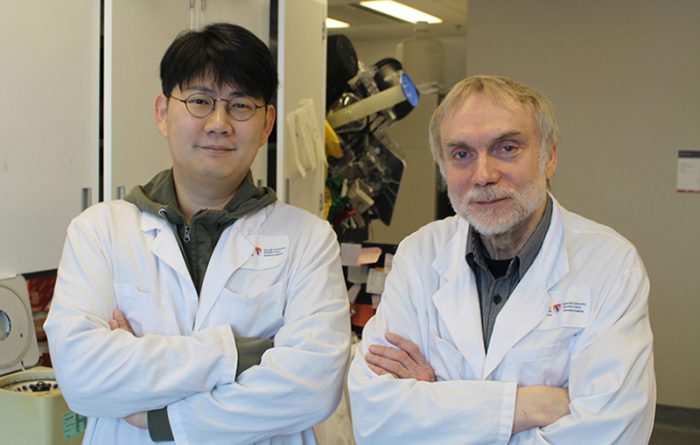RI-MUHC researchers on international team that produced the blueprint
Source: RI-MUHC
Life is defined by proteins and their ability to interact with one another to form complex structures, such as cells, organs and functioning organisms. A landmark study from an international team of researchers co-led by Frederic Roth of the Donnelly Centre, University of Toronto, and by Michael A. Calderwood, Marc Vidal, and David E. Hill from Harvard Medical School and Dana-Farber Cancer Center, has produced the most comprehensive blueprint to date of how all proteins interact and function in cells. Published on April 8, it is a valuable aid in the understanding of health and disease.
Postdoctoral fellow Dongsic Choi and senior scientist Janusz Rak from the Research Institute of the McGill University Health Centre (RI-MUHC), with their University of Toronto collaborator, Dae-Kyum Kim, contributed to the study. Their focus was on protein interactions that define the formation and content of extracellular vesicles (EVs), which are bubble-like structures sent from cells to communicate with other cells and coordinate their functions.
“This process is important in health, but also defines key aspects of cancer metastasis, blood vessel diseases and other pathological states,” explains Dongsic Choi. “Our contribution to the new study sheds some light on specific proteins that seem to orchestrate EV composition.”
Dr. Rak emphasizes the Nature study’s unprecedented scope. “It provides a four times more complete map of such interactions than any that has ever been published before,” he says, “characterizing 53,000 protein interactions. It’s a comprehensive blueprint that allows scientists to predict which protein groupings may be responsible for different cellular functions and biological processes. This extends our capacity to understand physiological and disease processes in their true complexity rather than one protein at a time, as has often traditionally been the case.”
“Arguably,” he adds, “viral diseases such as COVID-19 are also special examples of protein interactions.”
About the study
Luck, K., Kim, D., Lambourne, L. et al. A reference map of the human binary protein interactome. Nature 580, 402–408 (2020). https://doi.org/10.1038/s41586-020-2188-x
The study was primarily supported by the National Institutes of Health (U.S.). Work by the RI-MUHC team was supported by a Canadian Institutes of Health Research Foundation Grant.
April 28 2020

